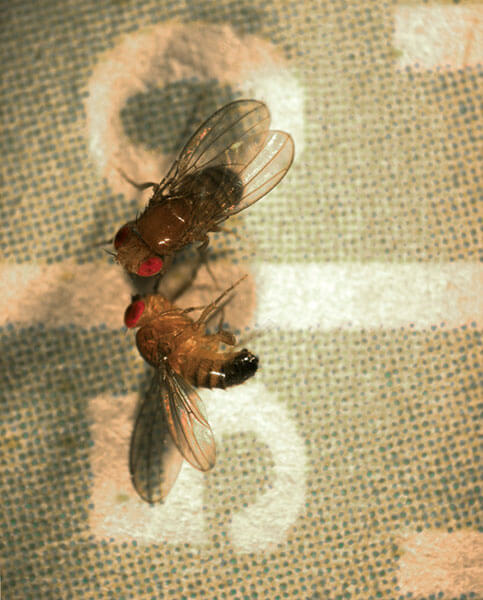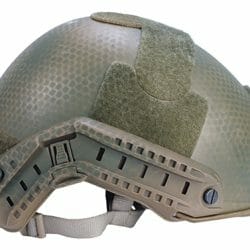Head Injuries: Tiny Subjects Shed Light

UW researchers are using fruit flies to study the immediate and long-term consequences of traumatic brain injury. Image: Grace Boekhoff-Falk and David Wassarman
UW scientists find that fruit flies can inform damage in humans.
As he heard reports of brain damage and early death in former athletes being linked to recurrent head trauma, UW professor Barry Ganetzky wondered if his fruit flies might be able to help.
A geneticist, Ganetzky is fervent about the power of fruit fly research — including his own work related to cardiac and neural diseases — to unlock basic secrets of human biology. Recalling an unexplored observation from nearly forty years ago, he showed colleague David Wassarman how a sharp strike to a vial of fruit flies left them temporarily stunned and disoriented. Wassarman, a UW professor of cell and regenerative biology, was immediately hooked.
Together they have turned Ganetzky’s accidental discovery into the first glimpses of a genetic role in traumatic brain injury (TBI) susceptibility.
TBIs occur when a force on the body jostles the brain inside the head, causing it to strike the inside of the skull. More than 1.7 million TBIs occur each year in the United States, about one-third due to falls and the rest mainly originating with car crashes, workplace accidents, and sports injuries. TBIs are also a growing issue among combat veterans who are exposed to explosions.
The immediate effects of TBI are usually temporary and mild — confusion, dizziness, headaches, and vision problems. But over time, these effects can escalate to neurodegeneration and related symptoms, such as memory loss, cognitive problems, severe depression, or Alzheimer’s-like dementia.
TBIs cost tens of billions of dollars annually in medical expenses and lost productivity. But, Ganetzky says, “unlike many important medical problems — high blood pressure, cancer, diabetes, heart disease — where we know something about the biology, we know almost nothing about TBI. Why does a blow to the head cause epilepsy? Or how does it lead down the road to neurodegeneration? Nobody has answers to those questions — in part, because it’s really hard to study in humans.”
Enter the fruit fly, with a nervous system remarkably similar to that of humans, down to the hard, skull-like cuticle encasing the brain. Armed with a homemade High-Impact Trauma (or HIT) device, constructed from hardware store materials, Ganetzky and Wassarman now have a way to reproducibly inflict traumas that mimic the injuries and symptoms of concussions and other TBIs.
Like humans, the flies initially bounce back from their injuries, but they gradually develop many of the same physical consequences associated with TBIs, including poor coordination and immune system activation, followed by neurodegeneration and — for some — early death.
With the flies, the researchers can now draw on a vast array of genetic tools and techniques to probe the underlying drivers of damage, with the goal of developing diagnostics and, ultimately, treatments. They have already identified the crucial role genetics plays in determining an injury’s effects — a finding that may explain why all potential TBI drugs to date have failed in clinical trials, despite showing early promise: there may be no one-size-fits-all treatment.
“The heart of the problem of solving traumatic brain injury is that we’re all different,” says Wassarman.
Published in the Spring 2014 issue



Comments
No comments posted yet.